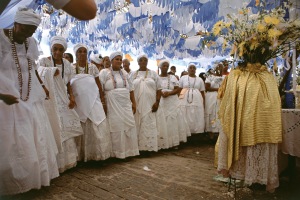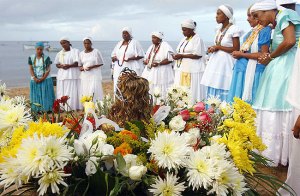Candombléa small African religion based on a mixture of Yoruba, Fon and Bantu beliefs, is popular among African countries especially Brazil.
Candomblé can be translated to “dance in honor of the gods” in English. The BBC reports that there are more than two million Candomblé followers worldwide. Candomblé is considered a syncretic religion because it combines many religions and beliefs. Candomblé originated from the enslaved Africans who brought their religion with them when they were shipped to Brazil during the slave trade.
Followers of Candomblé believe in one powerful and almighty God named Oludumaré. This god is served my lesser deities called orixas. Every person has their own orixa who serves the. The personal orixas serve them by controlling their destiny and protecting them. Orixas can be ancestors and they can be recent or hundreds of years old. Orixas serve as an important link between people and the spiritual world. Candomblé practitioners believe that every orixa has a central force. This central force can be associated with food, color, animals, days of the week, a person’s character, etc.
One central idea is that there is no concept of good and bad. Candomblé believes that each person has one mission which is to fulfill their own destiny by living their life to the fullest.
Candomblé is based on oral tradition. Music and dance is central to Candomblé worship. Many choreographed dances are used throughout the service in order to connect with ancestor spirits. Worship used to take place in the home of the slaves. Women in Candomblé are called “mothers of the holy one” and usually lead the service.
The first Candomblé temple began during 19th century in Salvador, Bahai in Brazil.



